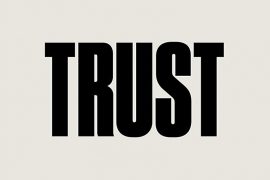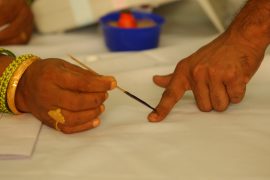In the year 1868, two pioneers of filmmaking were born on opposite ends of the country—Harishchandra Sakharam Bhatavdekar was born in Maharashtra, and Hiralal Sen was born in Bengal, now Bangladesh). Forgotten in the history of cinema, these two started making films a decade before Dada Phalke’s Raja Harishchandra came out in 1913.
Bhatavdekar and Sen didn’t even know each other; they were both professional still photographers. Bhatavdekar, a national trader of cameras, established a studio in Bombay in 1880. Sen, a son of a lawyer, successfully ran his business on the other side.
Then, the history of filmmaking in India began on 28 December 1895, when the Lumière brothers screened ten films in the basement of the Grand Café in Paris.
Marius Sestier, who worked as a chemist before he joined the Lumière firm, came to India in June 1896 to present the technology of Cinématographe to people who had not known the magic of motion pictures. On the morning of 7 July, the Bombay Gazette called it “the marvel of the century.” It advertised a show of “living photographic pictures in life-sized reproductions by Messrs Lumiere Brothers” at the Watson Hotel in the Kala Ghoda neighbourhood of South Bombay.
With the screening of six films, Entry of Cinematographe, The Sea Bath, Arrival of a Train, A Demolition, Ladies and Soldiers on Wheels, and Leaving the Factory, Indians, alongside the rest of the world, witnessed the birth of cinema. The show at the Watson Hotel, priced at Rs.1, became the “miracle of the century.” It prompted another screening at the Novelty Theatre on 14 July and alternated between venues for a month until 15 August.
While Sen wasn’t amongst the audience struck by the awe of moving pictures, a twenty-eight-year-old still photographer, Harishchandra Sakharam Bhatavdekar—also known as Save Dada—was present to witness the history. Prompted by the magic of the technology he had seen, Bhatavdekar invested twenty-one guineas and imported the first motion picture camera from the Riley Brothers of England. And Bhatavdekar’s film career began.
He shot a wrestling match between well-known wrestlers—Pundalik Dada and Krishna Navi in 1899. It was shot at the hanging gardens of Malabar Hills in Mumbai. The reel had to be sent to England for processing. In the meantime, Save Dada bought himself a projector for screening his films. The Wrestlers was the first film in India, making Bhatavdekar the first filmmaker.
Sen did not lag behind, either. In 1889, Professor Stevenson presented a film alongside The Flower of Persia, a staged show. There is no doubt that he, too, was captivated by the magic of motion pictures and filming cameras because he urged the professor to let him use his camera and shoot his first film, a compilation of scenes, The Dancing Scenes from the Flower of Persia.

In 1899, with a loan of Rs. 5,000 from his father, he ordered an Urban Bioscope from London’s Warwick Trading Company. And, in partnership with his brother, Motilal, he inaugurated the first movie company in India, Royal Bioscope.
While Bhatavdekar focused on making his own movies, Sen initially focused on importing films and screening them during intervals of staged shows at the Classic Theatre of Calcutta.
Bhatavdekar was showing his own short, factual, silent films in Bombay. After The Wrestlers, he shot a short documentary of A Man And His Monkey in 1899, which documented training the animal. The film was screened near Bombay Gymkhana, in the tents of the Madam Cama grounds.
Sen began his own production in 1901, mostly scenes from the theatre shows at the Classic, just like The Flower of Persia. He filmed his longest feature film, the popular staging at the Classic Theatre, Alibaba and the Forty Thieves.
Unlike Sen, who recorded stage shows, Bhatavdekar was documenting events that could prove as important marks in history. The British extensively employed filmmaking to record the British colonial rule in India, providing opportunities to aspiring filmmakers for extensive use of film cameras.
In 1901, Bhatavdekar filmed the Local Scenes, Landing of Sir M.M. Bhownuggree and Atash Behram, which recorded the renovation of a Parsi temple.
The early history of cinema is marked by the use of motion pictures as a medium of recording events rather than a means of commercialising the entertainment of an audience. Hence, documentaries came before feature films did, and Save Dada is recognised as the father of Indian Factual Films or documentaries.
When Raghunath Paranjapye returned from Cambridge University as the first senior wrangler on 7 December 1901, he was felicitated at Narottam Morarji’s house on Peddar Road, Mumbai. The event was of utmost importance and was attended by many, including Dr B. K. Bhatavdekar and Gopal Krishna Gokhale. Bhatavdekar documented the scene, and the film is acclaimed as the first official documentary. It was also the first news footage in India.
Lord Curzon wanted the Delhi Durbar of 1902-03 to be filmed. He was so involved in the recording that he had identified the positions for the camera. Bhatavdekar and an American biographer filmed the Delhi Durbar, marking the enthronement of Edward VII.
Hiralal Sen was also present there and highly credited for his footage of Delhi Durbar. Sen, at the time, had been detected with cancer, and yet, he had given wide coverage of the event. In 1905, Sen produced a film on the Partition of Bengal. The film is arguably the first political documentary of India.
Sen continued to make films, newsreels and advertisements; however, with declining health and increasing competition, Royal Bioscope’s fortunes continued to wean. By 1913, his relationship with his brother Motilal had also deteriorated. The two had moved out of their ancestral house and began living separately, and the company had ceased production.
Bhatavdekar, on the other hand, made films until the mid-1900s when he bought Gaiety Theatre in Mumbai. He then dedicated his life to running and maintaining the theatre, which brought him considerable wealth until the end of his days.
On 24 October 1917, Motilal’s house, which held the company’s equipment and Hiralal’s entire film career documentation, accidentally caught fire, destroying all his work. Hiralal’s niece was killed in the fire, and only a couple of days later, on 26 October. Sen passed away.
The technology that goes into film production today has come far from the film cameras Save Dada and Hiralal Sen used. It has constantly evolved, upping the standards of the art form that once began at the basement of the Grand Café in Paris and came to Watson Hotel of Mumbai, leaving Indians in awe. However, these pioneers of filmmaking that are forgotten today are a reminder of missing parts of India’s history.
While Sen’s fate destroyed him from history, Bhatavdekar’s work is nearly lost. Had these filmmakers’ work been available, Indian cinema would have had different benchmarks.
The first feature film, fiction and iconic to the Indian cinema, Raja Harishchandra, might not have been the first. It came fourteen years after Bhatavdekar used a motion picture camera and produced the first film and twelve years after Sen’s longest film, Alibaba and the Forty Thieves.
-30-
Copyright©Madras Courier, All Rights Reserved. You may share using our article tools. Please don't cut articles from madrascourier.com and redistribute by email, post to the web, mobile phone or social media.Please send in your feed back and comments to [email protected]











